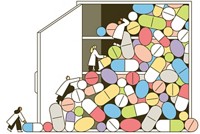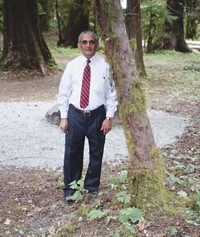Advertisement
Grab your lab coat. Let's get started
Welcome!
Welcome!
Create an account below to get 6 C&EN articles per month, receive newsletters and more - all free.
It seems this is your first time logging in online. Please enter the following information to continue.
As an ACS member you automatically get access to this site. All we need is few more details to create your reading experience.
Not you? Sign in with a different account.
Not you? Sign in with a different account.
ERROR 1
ERROR 1
ERROR 2
ERROR 2
ERROR 2
ERROR 2
ERROR 2
Password and Confirm password must match.
If you have an ACS member number, please enter it here so we can link this account to your membership. (optional)
ERROR 2
ACS values your privacy. By submitting your information, you are gaining access to C&EN and subscribing to our weekly newsletter. We use the information you provide to make your reading experience better, and we will never sell your data to third party members.
Pharmaceuticals
Cancer Prevention, Naturally
The difficult search for cancer-preventing natural products takes several paths
by Carmen Drahl
June 21, 2010
| A version of this story appeared in
Volume 88, Issue 25

Cancer is a major killer, with each type of cancer a different beast, and molecules from nature have become some of medicine’s most powerful cancer treatments. But rather than fighting cancer that’s already raging, many scientists are seeking ways to prevent or delay it.
Cancer prevention has seen a few molecular success stories so far, although none of the compounds has come straight from nature. For example, the synthetic drugs finasteride and dutasteride, which treat enlargement of the prostate gland, have proven effective at deterring prostate cancer. Both the osteoporosis drug raloxifene and the breast cancer treatment tamoxifen, also synthetic agents, have cut the breast cancer rate in half among women at high risk. Nevertheless, some research groups believe natural products might prove to be a fruitful source of future preventive drugs for cancer.
By and large, chemoprevention has lagged behind preventive-drug development in other areas, such as heart disease. The pipeline of cancer prevention drugs is woefully thin, especially when compared with the pipeline of experimental drugs for treating cancer, and most pharmaceutical companies aren’t pursuing new chemopreventive agents.
John M. Pezzuto of the University of Hawaii, Hilo, is among those trying to fill the cancer prevention pipeline with Mother Nature’s help. “When we got into this field, there were programs in natural products focused on chemotherapy but almost nothing focused on chemoprevention,” he says.
Most existing cancer prevention agents didn’t come from a ground-up discovery and medicinal chemistry effort, Pezzuto says. Instead, they were developed from drugs that were already on the market for other uses, sometimes stemming from epidemiological observations about a cancer prevention trend. For instance, aspirin, which has proven efficacious at preventing colon cancer in several randomized clinical trials, was first recognized for its ability to relieve pain and prevent heart attacks and strokes. If useful cancer prevention agents have been developed by such indirect routes, still more new agents might come from a dedicated discovery platform, Pezzuto contends.
For nearly 20 years, Pezzuto has led a multi-institution team dedicated to finding natural-product agents and new molecular targets for cancer prevention. The team, which is funded by the National Cancer Institute (NCI), combines experts in natural-product isolation, organic synthesis, structural biology, mass spectrometry, and animal testing.
The program has evolved over the years. The group’s discovery efforts began with terrestrial plants. That approach uncovered several molecules with promising cancer prevention activity, most notably resveratrol, the red-wine compound made by a range of plants that has been the subject of controversy because of its purported antiaging properties (C&EN, Dec. 14, 2009, page 36).
Last month, team member Andrew D. Mesecar of the University of Illinois, Chicago, solved the structure of resveratrol bound to cyclooxygenase-1, an enzyme thought to mediate resveratrol’s chemopreventive activity (Biochem. J., DOI: 10.1042/BJ20091857). Pezzuto’s team was the first to show that resveratrol might have cancer prevention activity (Science 1997, 275, 218), and today, the agent has reached clinical trials for this purpose.
Another agent the team is working with, abyssinone II, is from a plant used in traditional Chinese medicine. It has been selected for further studies under NCI’s Rapid Access to Preventive Intervention Development (RAPID) program, which assists academic investigators with preclinical and early clinical drug development. Team member Mark Cushman of Purdue University has been preparing abyssinone derivatives for additional testing.
Pezzuto’s team is now starting to look beyond plants. Relatively little is known about the potential of compounds from deep-ocean microbes, Pezzuto says. So, in collaboration with William Fenical of Scripps Institution of Oceanography, who is a pioneer in this area, the team has started exploring these microbes as a source of natural-product agents for cancer prevention.
At Ohio State University, Gary D. Stoner is studying the cancer prevention potential of natural products in foods. He bases his work on the concept that although the amount of a natural product in a specific food is small, a complex mixture of foods might provide a favorable chemopreventive effect. “We’ve worked mainly with berries, a little bit with beets,” Stoner says.
His current focus is on a freeze-dried and powdered black raspberry mixture his team has developed that blocks formation of esophageal and colon cancers in rats. Preliminary studies of the powder on human volunteers with premalignant lesions in their mouths indicate that the berry powder is safe to consume. More studies are needed to show that it truly slows or halts the onset of cancer. To that end, Stoner’s team has received funding from NCI to conduct a randomized, placebo-controlled clinical trial on the berry powder, which the researchers hope to begin soon. “The food-based approach to cancer prevention has been hurt” by companies that have made health claims for foods “on the basis of very little research,” Stoner says.
Farther east, at Dartmouth College, in Hanover, N.H., Michael B. Sporn has been researching chemopreventive agents for decades. In fact, he coined the term “chemoprevention” in the 1970s. Like Pezzuto, Sporn believes in the potential utility of isolated natural products in cancer prevention. To Sporn, natural products are less of a solution themselves and more of an inspiration for analogs. “Finasteride and dutasteride are not natural products,” he points out. “They are testosterone analogs.”
Sporn’s own research has largely focused on making chemical improvements to retinoids and related molecules that have potential as cancer prevention agents. “Many natural-product scaffolds give us important clues about what might be useful,” he says, and organic chemists can make such molecules into much better chemoprevention agents.
No matter how good a molecule might look in early studies, it’s still tough for an experimental chemoprevention therapy to make it through the drug approval process, especially when compared with a drug already on the market for something else. Any agent for preventing cancer is going to be given primarily to healthy patients, says Barnett S. Kramer, associate director for disease prevention at the National Institutes of Health. “When you’re dealing with healthy people, there’s a very high bar to clear,” he says. “It’s good to have a sense of what the potential harms will be going into a study. If you have information from previous trials, then it’s very helpful background.”
In that sense, it helps that repurposed drugs such as aspirin had already been studied extensively in other contexts. “It is difficult to make a healthy person better off than they already are,” Kramer says. Studies of new entities need to be undertaken with the appropriate amount of caution, he adds.
Large-scale cancer prevention studies of the natural products beta-carotene and vitamin E have been disappointing because neither turned out to be an effective cancer prevention agent, Kramer notes. But that doesn’t mean prevention researchers should give up on studying molecules from nature, he says. As preventive agents, “natural products haven’t been as successful as one might like, but that doesn’t mean the next one won’t be,” he says. “We have to judge them on a case-by-case basis.”
Natural products are a good idea for chemoprevention, Sporn says. He and others believe it’s only a matter of time before that potential becomes reality.






Join the conversation
Contact the reporter
Submit a Letter to the Editor for publication
Engage with us on Twitter